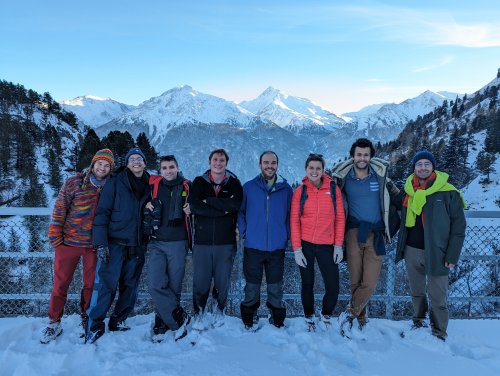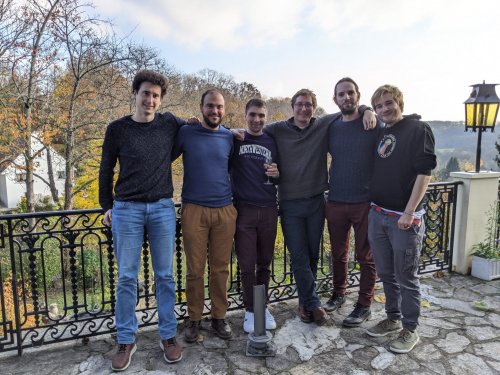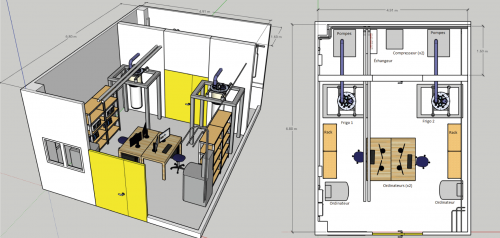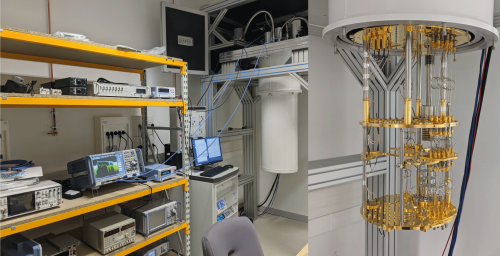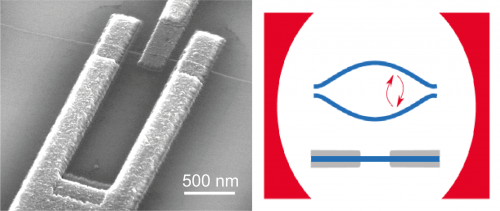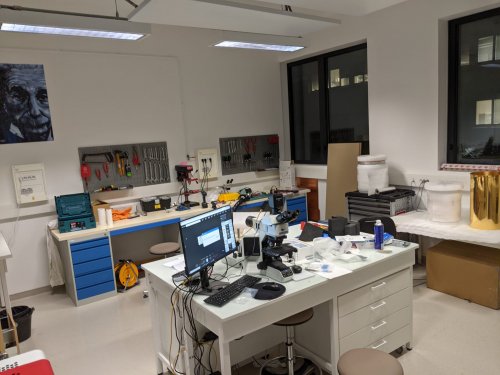Contacts: Landry Bretheau & Jean-Damien Pillet
Find us: Google Maps | Ecole Polytechnique, PMC, Building 83, 1st floor
Offices / Labs: 83.20.18, 83.20.19, 83.20.20, 83.20.25 and 83.20.37
TEAM MEMBERS
Permanent Faculty
– Landry Bretheau
– Everton Arrighi
– Joël Griesmar
– Jean-Damien Pillet
Postdocs
– Hadrien Duprez
PhD Students
– Samy Annabi
– Hannes Riechert
– Maxime Hantute
Regular Visitors
– Danijela Markovic: CNRS Researcher at Laboratoire Albert Fert
– Baptiste Carles: PhD Student at Laboratoire Albert Fert
Alumni
– Ambroise Peugeot: was a Postdoc for 2.5 years in 2020-2023. Now Postdoc at ENS Lyon.
– Pierre-Eugène Coulon: was a Research Engineer for 1.3 year in 2018-2020.
– Interns: Solenn Cances (2022, X / ETH Zurich M2), Baptiste Carles (2022, ENS Paris-Saclay M1), Etienne Bargel (2020, ENS Paris-Saclay L3), Elie De Seze (2020, ENS Paris-Saclay L3), Luke Pilache (2020, X-Bachelor L2).
Hiring
We are always looking for highly motivated PhD students and postdocs. Female candidates are strongly encouraged to apply. Please contact us by email.
NEWS
– Dec 2023: We just measured quantum coherence of carbon nanotube-based gatemon qubit! Exciting.
– Dec 2023: Landry was invited by President Macron at the Elysée. Totally unexpected and totally awesome!
– Nov 2023 : Congrats to Samy and JD for their great talks at the Plenary Conference of the Quantum Mesoscopic Physics GDR, at Aussois.
– Oct 2023: Congrats to JD who just defended his Accreditation to Supervise Research (HDR).
– Oct 2023: Welcome to Maxime & Hadrien who joined the group as PhD Student and Postdoc.
– Sep 2023: We were awarded a grant by the French Quantum Plan (PEPR RobustSuperQ).
– Sep 2023: New paper by QCMX published in Physical Review Applied on the Josephson Diode Effect (aka JD effect) in an Andreev molecule.
– Sep 2023: Landry was interviewed by Polytechnique Insights together with Loïc Henriet from Pasqal on Quantum Computing. Check out the video.
– Aug 2023: Nice measurements of 0-pi quantum phase transitions in a carbon nanotube-based Josephson junction, with fourfold periodicity revealing spin and valley degeneracy.
– May 2023: Great tribute conference for Fabien Portier at SPEC, CEA. RIP.
– Mar 2023: Landry & JD were interviewed by Rayon X, who puts the spotlight on scientists.
– Mar 2023: Farewell to Ambroise who just got a super postdoc position at ENS Lyon. Have fun with DC-pumped cat qubits!
– Feb 2023: We measured large supercurrents in a carbon nanotube, up to 8 nA. And some fancy non-local Josephson effect.
– Oct 2022: We measured a gate-dependent supercurrent in a carbon nanotube! Isw = 200 pA.
– Sep 2022: Welcome to Joël who joined the group as an Assistant Professor!
– Aug 2022: Goodbye to Joël who just got a permanent position.
– June 2022: Congrats to Landry who just defended his Accreditation to Supervise Research (HDR).
– Feb 2022: Joël published a nice popularization article in PMC’s newsletter on how a dilution fridge works.
– Feb 2022: Welcome to Everton who joined the group as a Research Engineer.
– Jan 2022: Hannes built 2 fancy RF sample-holders called JAWS. Thanks Marius and the ENS team.
– Nov 2021: We’ve installed our new BlueFors dilution cryostat, with vector magnet (3/1/1 T) and bottom loader. Base temp = 8 mK !!! Thanks Mathias & Vojko.
– Nov 2021: We’ve just installed our carbon nanotube furnace. Base temp = 1000 °C !
– Nov 2021: We measured our first Rabi oscillations: T1 = 40 µs & T2 = 20 µs. Thanks Manu for the hero qubit.
– Oct 2021: Congrats to Joël & JD for their paper published in Physical Review Research on a high-sensitivity broad-band Josephson junction spectrometer.
– Oct 2021: We’ve received our Quantum Orchestration Platform (OPX) from Quantum Machines. Let’s do real-time control!
– Oct 2021: We performed the spectroscopy of a transmon qubit using our home-made Josephson spectrometer!
– Oct 2021: We measured tunable RF emission from a Josephson junction: 5 MHz bandwidth!
– Oct 2021: Welcome to Hannes & Joël who joined the group as PhD Student and Post-Doctoral Associate.
– Sep 2021: Congrats to Landry who was appointed Professor.
– Sep 2021: New RF equipments from Rohde & Schwarz (2 MSG). New cryogenic circulators and amplifiers from LNF.
– Sep 2021: Official start of the EU-funded FERMIcQED project!
– July 2021: Congrats to Ambroise for his paper published in Physical Review X on a dc-Biased Josephson Junction generating two-modes entanglement.
– June 2021: We measured the IV characteristic of a tunnel Josephson junction! DC Josephson effect :)
– May 2021: We joined the PMC Laboratory. What a relief!
– May 2021: Congrats to JD & Landry for their back-to-back papers published in Physical Review Research (013288 & 013289) on Weyl Josephson circuits.
– May 2021: Welcome to Samy who joined the group as a PhD Student.
– Mar 2021: We spotted our first individual carbon nanotube!
– Mar 2021: Landry was interviewed by Polytechnique Insights on the "Plan Quantique"
– Nov 2020: Congrats to Ambroise! He was awarded the 2020 PhOM PhD Award, for his work on "Quantum microwave sources from inelastic Cooper pair tunneling"
– Oct 2020: Welcome to Ambroise who joined the group as a Post-Doctoral associate.
– Sep 2020: We’ve received all the elements to build up our Rayleigh optical characterization platform for the carbon nanotubes (supercontinuum laser, spectrometer, optical table, optics, objectives)
– Sep 2020: Congrats to JD who was awarded a young researcher grant from ANR.
– Sep 2020: Landry was awarded an ERC Starting Grant for the FERMIcQED project! → X-News
– July 2020: We measured quantum limited amplification using a SNAIL from Zaki.
– Jun 2020: Congrats to JD for his paper published in SciPost Physics Core on the Scattering description of Andreev molecules.
– Jun 2020: Welcome to Etienne, Elie & Luke who joined the group as summer interns.
– Mar 2020: Congrats to Landry who was awarded the 2020 Nicholas Kurti Science Prize, together with Rebeca Ribeiro from CNRS C2N → X-News
– Feb 2020: Tons of room-T µwave components have arrived.
– Nov 2019: Congrats to JD for his nice PRL, Science, MRS Bulletin & X-News
– Sep 2019: New DC electronic instruments (oscillos, sources, DAC, amp).
– Sep 2019: JD and Landry got tenured!
– Aug 2019: Congrats to JD for his paper published in Nano Letters on Nonlocal Josephson effect in Andreev molecules.
– Aug 2019: New paper by JD & co published in Physical Review Applied on Injection Locking and Parametric Locking in a Superconducting Circuit.
– Jul 2019: We’ve received our cryogenic circulators and amplifiers from LNF.
– Apr 2019: We’ve installed our new BlueFors dilution refregirator. Base temp = 7 mK !!! Thanks Aymeric & Vojko.
– Mar 2019: After 3 months, electricity, masonry and plumbing works are finished! Our lab is ready to get the fridge. And we’ve just received our expresso machine !
– Jan 2019: New RF equipments from Rohde & Schwarz (1 VNA, 1 PSA and 3 MSG).
– Jan 2019: Congrats to Landry for his paper published in Nature Nanotechnology on a graphene-based superconducting qubit → spotlight by Nature Nano & MIT News
– Nov 2018: New paper by Landry & co published in Science that shows gate-controllable superconductivity in monolayer WTe2 → spotlight by MIT News
– Sep 2018: We’ve received a 40L cylinder of He3. Thanks to Michel and the DOE :)
– Sep 2018: New paper by Landry & co in PRB that reports tunneling spectroscopy measurements of graphene proximitized by large-gap superconductors.
– Jul 2018: Congrats to Landry who was awarded a young researcher grant from ANR.
– Dec 2017: The QCMX-lab was awarded a grant from SIRTEQ.
– Sep 2017: We’ve been hired as Assistant Professors (with Startup Grant and Lab Space). Let’s build from scratch a new lab. Long-live QCMX!
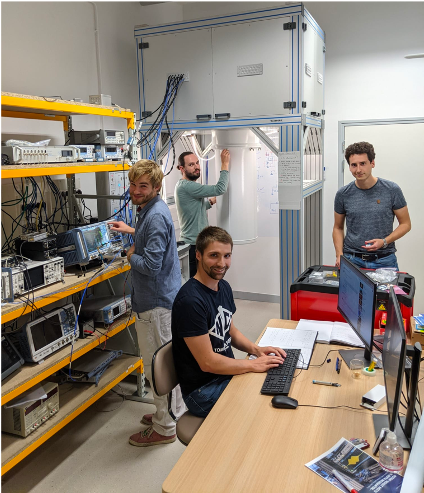
RERSEARCH
The QCMX Lab was created in September 2017 by Landry Bretheau and Jean-Damien Pillet. Since then, we’ve been building up from scratch a brand new laboratory dedicated to the development and measurement of hybrid quantum circuits. This requires access to temperatures close to absolute zero (few mK), nanofabrication tools for the creation of new architectures and electronic instruments in the DC and microwave range for quantum control. The QCMX Lab currently contains two dilution cryostats (from the company BlueFors), which makes it the coldest point of l’X.
One of the crucial ingredients for the operation of quantum circuits is the non-linearity provided by a non-dissipative electronic component called a Josephson junction. These junctions are usually made of two superconductors coupled by tunnel effect through a thin insulating barrier. There is however a wider class of Josephson junctions where superconductors are connected by quantum conductors, such as graphene, semiconductor nanowires or carbon nanotubes. In these systems, barely exploited in the context of quantum circuits, physics is richer because they host additional degrees of freedom associated with the electronic properties of quantum conductors.
We want to use this unexploited resource to design new quantum devices, notably through the development of ultra-clean growth of carbon nanotubes that can be integrated into superconducting circuits. Such Josephson junctions then host elementary electronic excitations in the GHz energy range that can be controlled coherently by means of microwave signals. Our circuits, placed in a microwave cavity to protect it from environmental decoherence, will allow to detect new electronic states of matter such as, for example, Andreev Bound States, Weyl fermions or Majorana fermions.
Hybrid quantum circuit architectures as developed within the QCMX Lab offer tremendous opportunities for quantum simulation, particularly to answer modern questions of fundamental Physics. For example, a charge trapped in a nanotube or a semiconducting nanowire, connected in parallel to a Josephson junction can simulate the problem of a spin 1/2 immersed in a space-dependent magnetic field. In the quantum regime, the degrees of freedom of spin and position are entangled and obey a joined dynamic of great complexity. This experiment would make it possible to understand in more details the spin-boson model which is at the heart of the description of the dissipation in quantum physics.
Beyond this basic situation, it is possible to imagine more complex systems based on networks of several quantum objects. For example, a carbon nanotube connected to multiple superconducting electrodes may behave as a network of quantum dots. Strategies to perform the quantum teleportation of an electron within such electronic device are currently developing.
FUNDINGS
With the financial support of:
– the Ecole Polytechnique (Young Team Fellowship QCMX)
– the European Research Council (ERC) under the European Union’s Horizon 2020 research and innovation programme (Grant agreement No. 947707 FERMIcQED)
– the Agence Nationale de la Recherche (Grant ANR-18-CE47-0012 JCJC QIPHSC and Grant ANR-20-CE47-0003 JCJC NEWS)
– the French Quantum Plan (PEPR RobustSuperQ)
– the Fondation de l’Ecole Polytechnique (unrestricted donation)
– the DIM SIRTEQ Ile-de-France (Grant ONQC).




